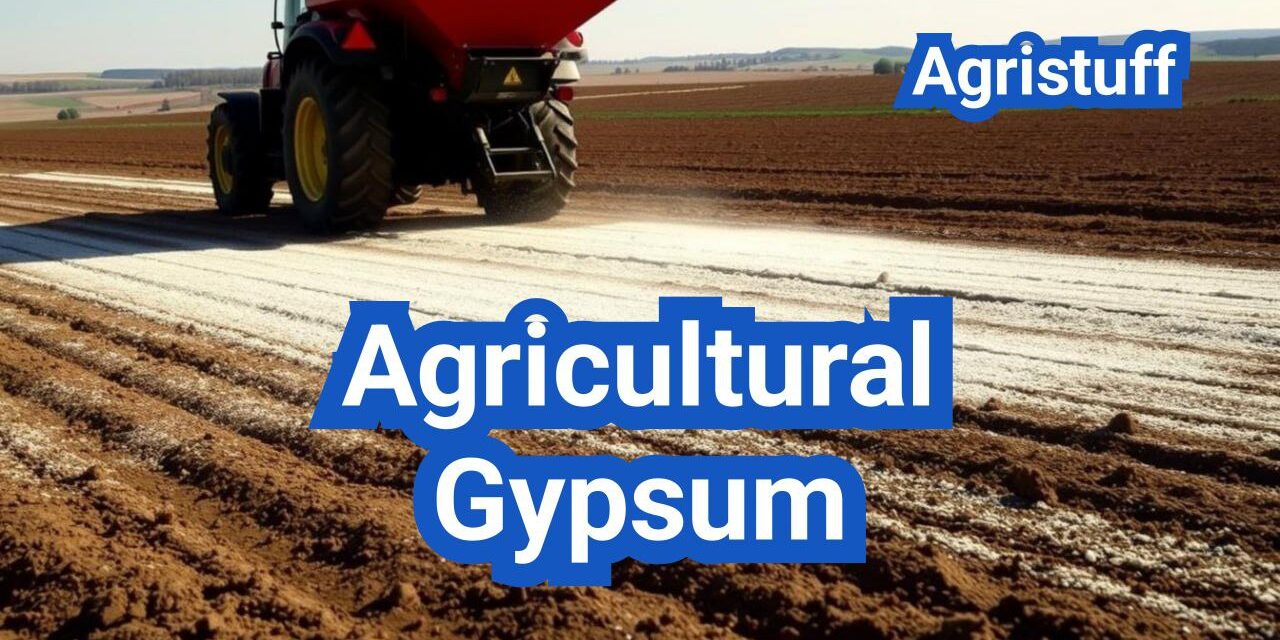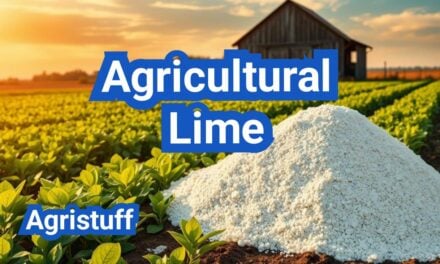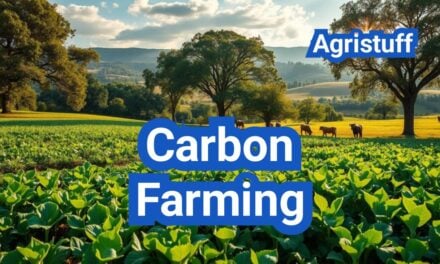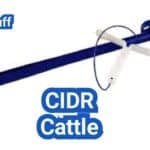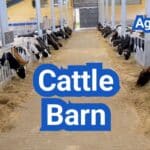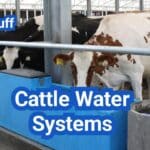Soil sodicity is a significant issue affecting farmers worldwide, leading to reduced crop yields and lower productivity. Calcium sulfate fertilizer, commonly known as gypsum, has been widely used as a soil amendment to address this problem.
Gypsum works by improving soil structure, allowing for better water infiltration and aeration. This, in turn, promotes healthy root growth and increases crop yields. But the question remains: is using gypsum a cost-effective solution for farmers?
Key Takeaways
- Gypsum is a natural soil amendment that improves soil structure and reduces sodicity.
- Using gypsum can lead to increased crop yields and better water infiltration.
- The cost-effectiveness of gypsum as a soil amendment is a crucial consideration for farmers.
- Gypsum benefits include improved soil aeration and reduced soil erosion.
- Farmers should consider the long-term benefits of using gypsum when evaluating its cost-effectiveness.
Understanding Agricultural Gypsum: Composition and Properties
With its unique composition and properties, agricultural gypsum offers a multifaceted solution for various soil-related issues. Agricultural gypsum, primarily composed of calcium sulfate (CaSO4·2H2O), is a naturally occurring mineral that has been widely used in agriculture to improve soil structure and fertility.
What is Agricultural Gypsum (Calcium Sulfate)?
Agricultural gypsum, also known as calcium sulfate dihydrate, is a mineral that occurs naturally in sedimentary deposits. It is mined and processed for use in various agricultural applications. The chemical composition of agricultural gypsum is characterized by its calcium and sulfur content, making it an essential source of these nutrients for crops.
Chemical Properties and Forms Available
The chemical properties of agricultural gypsum are defined by its calcium sulfate composition. It is relatively soluble in water, which allows it to be effective in soil amendment. Agricultural gypsum is available in various forms, including powder and granular textures, catering to different application methods and soil types.
Difference Between Agricultural Gypsum and Other Calcium Products
While agricultural gypsum is a calcium product, it differs significantly from other calcium-based amendments like lime. Unlike lime, which is primarily calcium carbonate and can significantly alter soil pH, agricultural gypsum has a neutral effect on soil pH. This characteristic makes gypsum an ideal choice for soils where pH adjustment is not desired or needed.
Sources of Agricultural Gypsum in the United States

In the U.S., agricultural gypsum is derived from multiple sources, including natural deposits and industrial byproducts. This diversity in sourcing helps ensure a steady supply of this crucial soil amendment for farmers and agricultural practitioners across the country.
Natural Gypsum Deposits
Natural gypsum deposits are a primary source of agricultural gypsum. These deposits are formed through the evaporation of ancient seas, leaving behind calcium sulfate, the main component of gypsum. States like Oklahoma, Iowa, and Texas have significant gypsum deposits that are mined for agricultural use.
Flue-Gas Desulfurization (FGD) Gypsum
Flue-Gas Desulfurization (FGD) gypsum is an industrial byproduct resulting from the desulfurization process in coal-fired power plants. This synthetic gypsum is a valuable source of agricultural gypsum, offering a consistent quality that is often comparable to natural gypsum. The use of FGD gypsum in agriculture has gained popularity due to its availability and effectiveness in soil improvement.
Other Industrial Byproduct Sources
Apart from FGD gypsum, other industrial processes generate gypsum as a byproduct. For instance, certain manufacturing processes in the chemical and food industries produce gypsum that can be repurposed for agricultural use. These byproduct sources contribute to the overall availability of agricultural gypsum, supporting sustainable practices by reusing materials that would otherwise be considered waste.
Quality Considerations for Different Sources
The quality of agricultural gypsum can vary depending on its source. Factors such as purity, particle size, and the presence of contaminants are crucial in determining the suitability of gypsum for agricultural applications. Natural gypsum tends to have varying levels of purity, while FGD gypsum is often of consistent quality due to the controlled nature of its production process. Farmers and agricultural professionals should consider these quality factors when selecting a gypsum product for their specific needs.
The Science Behind Sodic Soil Reclamation
Agricultural gypsum plays a pivotal role in sodic soil reclamation by facilitating the displacement of sodium with calcium. Sodic soils, characterized by high levels of exchangeable sodium, often suffer from poor structure and reduced fertility. The application of agricultural gypsum is a widely accepted practice for improving such soils.
Understanding Soil ESP (Exchangeable Sodium Percentage)
Exchangeable Sodium Percentage (ESP) is a critical measure in assessing sodic soils. It represents the proportion of sodium ions on the soil’s cation exchange capacity. Soils with an ESP of 15 or higher are considered sodic. Understanding ESP is crucial for determining the amount of gypsum required for effective reclamation.
How Calcium Displaces Sodium in Soil
When agricultural gypsum is applied to sodic soils, the calcium in gypsum displaces sodium from the soil’s cation exchange sites. This process improves soil structure by reducing the dispersive effects of sodium, thereby enhancing aggregation and porosity.
The Chemical Reactions in Soil Amendment
The chemical reaction involves the dissolution of gypsum (calcium sulfate) into calcium and sulfate ions. Calcium ions then replace sodium ions on the soil exchange sites, forming sodium sulfate, which can be leached out. This reaction is fundamental to the reclamation process.
Monitoring Soil Improvement After Treatment
After applying agricultural gypsum, monitoring soil improvement is essential. This involves regular soil testing to assess changes in ESP, pH, and overall soil structure. Effective monitoring helps in adjusting the application rates and timing for optimal results.
| Parameter | Before Treatment | After Treatment |
|---|---|---|
| ESP (%) | 20 | 5 |
| pH | 8.5 | 7.5 |
| Soil Structure | Poor | Improved |
By understanding and applying the science behind sodic soil reclamation, farmers and agricultural practitioners can significantly improve soil health, leading to better crop yields and more sustainable farming practices.
Identifying Soil Problems That Agricultural Gypsum Can Address

Soil issues such as sodicity, compaction, and poor water infiltration can be effectively managed with agricultural gypsum. Understanding the specific problems in your soil is crucial for determining the effectiveness of gypsum as a soil amendment.
Signs of Sodic and Saline-Sodic Soils
Sodic soils are characterized by high levels of sodium, which can lead to soil dispersion and reduced water infiltration. Signs of sodic soils include poor soil structure, crusting on the surface, and waterlogging. Saline-sodic soils, on the other hand, contain high levels of both salts and sodium, complicating reclamation efforts.
“Sodic soils can be a significant challenge for farmers,” notes Dr. John Smith, a soil scientist. “Agricultural gypsum is a valuable tool in mitigating sodicity by providing calcium to displace sodium.”
Clay Soil Compaction Issues
Clay soils are prone to compaction, which can severely limit root growth and water infiltration. Agricultural gypsum can help alleviate compaction by improving soil structure and aggregate stability.
- Poor aeration
- Reduced water infiltration
- Increased soil density
Poor Water Infiltration and Drainage
Soils with poor water infiltration can lead to waterlogging and reduced crop yields. Gypsum can help improve soil structure, allowing for better water infiltration and drainage.
Soil Testing Methods for Gypsum Need Assessment
To determine if your soil needs gypsum, several soil testing methods can be employed. These include assessing the soil’s exchangeable sodium percentage (ESP) and evaluating its electrical conductivity (EC).
Key soil testing parameters include pH, EC, ESP, and soil texture analysis. By understanding these factors, farmers can make informed decisions about gypsum application.
Benefits of Agricultural Gypsum for Soil Structure
Agricultural gypsum plays a crucial role in enhancing soil structure, offering numerous benefits for farmers and the environment. By improving the physical properties of the soil, agricultural gypsum can lead to better crop yields and more sustainable farming practices.
Improving Soil Aggregate Stability
One of the primary benefits of agricultural gypsum is its ability to improve soil aggregate stability. Soil aggregates are crucial for maintaining soil structure, allowing for better water infiltration and aeration. Agricultural gypsum helps to strengthen these aggregates, reducing the risk of soil erosion and improving overall soil health.
Enhancing Water Infiltration and Percolation
Agricultural gypsum also enhances water infiltration and percolation, which are essential for healthy plant growth. By improving the soil’s ability to absorb and retain water, agricultural gypsum helps to reduce runoff and ensure that crops receive the water they need. As noted by soil experts, “Gypsum can significantly improve water infiltration, reducing the risk of waterlogging and associated problems.”
Reducing Surface Crusting and Compaction
Surface crusting and compaction are common issues in many soils, particularly those with high clay content. Agricultural gypsum helps to mitigate these problems by improving soil structure and increasing the porosity of the soil. This leads to better root growth and overall plant health, as roots can penetrate the soil more easily.
Promoting Deeper Root Development
By improving soil structure and reducing compaction, agricultural gypsum promotes deeper root development. Deeper roots allow plants to access more nutrients and water, leading to healthier and more resilient crops. As a result, farmers can expect to see improved crop yields and reduced soil erosion over time.
Calculating the Right Agricultural Gypsum Application Rate

Agricultural gypsum application rates must be carefully determined to achieve optimal soil health and productivity. The correct application rate depends on several factors, including soil type, sodicity levels, and specific crop requirements.
Using the Gypsum Requirement Calculator
A gypsum requirement calculator is a valuable tool for determining the appropriate agricultural gypsum application rate. This calculator typically considers soil test results, including the exchangeable sodium percentage (ESP) and other relevant parameters.
To use the gypsum requirement calculator effectively:
- Collect soil samples from the field.
- Conduct soil tests to determine ESP, pH, and other relevant factors.
- Input the soil test results into the calculator.
- Adjust the application rate based on the calculator’s recommendations.
Soil Test Interpretation for Gypsum Application
Interpreting soil test results is crucial for determining the need for agricultural gypsum and the appropriate application rate. Key factors to consider include:
- Exchangeable Sodium Percentage (ESP): Higher ESP values indicate greater sodicity.
- Soil pH: Gypsum application can affect soil pH, although it is generally pH-neutral.
- Calcium and sulfur levels: Gypsum provides both calcium and sulfur, which can impact nutrient availability.
Soil testing laboratories often provide recommendations for gypsum application based on these factors.
Adjusting Rates Based on Soil Type and Conditions
Different soil types and conditions require adjustments to the agricultural gypsum application rate. For example:
- Clay soils may require higher application rates due to their higher cation exchange capacity.
- Sandy soils may require lower application rates.
- Soils with high levels of organic matter may respond differently to gypsum application.
By considering these factors and using the gypsum requirement calculator, farmers can optimize their agricultural gypsum application rates to achieve the best results.
Step-by-Step Guide to Applying Agricultural Gypsum

Agricultural gypsum application is a key step in reclaiming sodic soils and enhancing overall soil health. To achieve the best results, it’s essential to follow a systematic approach that includes proper timing, effective application methods, and appropriate post-application management.
Timing Considerations for Maximum Effectiveness
The timing of agricultural gypsum application can significantly impact its effectiveness. Ideally, gypsum should be applied during the off-season or before planting crops. This allows the gypsum to start working on the soil structure without interfering with ongoing agricultural activities. In regions with significant rainfall, applying gypsum before the wet season can enhance its effectiveness as the rain helps to dissolve and distribute the gypsum throughout the soil profile.
Key considerations for timing include:
- Applying gypsum when the soil is not waterlogged or frozen
- Coordinating with other soil amendments or tillage operations
- Considering the crop rotation and planting schedule
Application Methods and Equipment
Agricultural gypsum can be applied using various methods, depending on the scale of operation and the specific requirements of the soil. Common application methods include:
- Broadcast spreaders: Effective for large areas, these spreaders distribute gypsum evenly across the field.
- Drop spreaders: More precise than broadcast spreaders, drop spreaders are useful for smaller or more sensitive areas.
- Incorporation with tillage: Gypsum can be incorporated into the soil during tillage operations to improve its distribution.
The choice of equipment depends on the form of gypsum (powder or granular) and the soil conditions. It’s crucial to calibrate the application equipment to ensure the correct rate of gypsum is applied.
Post-Application Management Practices
After applying agricultural gypsum, several post-application management practices can enhance its effectiveness:
- Monitoring soil moisture: Adequate moisture is necessary for gypsum to react with the soil.
- Irrigation management: In irrigated fields, managing the irrigation schedule can help in leaching salts and improving soil structure.
- Soil testing: Regular soil testing is essential to monitor the progress of soil improvement and adjust future applications as needed.
By following these steps and considering the specific conditions of your soil, you can maximize the benefits of agricultural gypsum application and improve your soil’s structure and fertility.
Agricultural Gypsum vs. Lime: Choosing the Right Amendment

Understanding the differences between agricultural gypsum and agricultural lime is crucial for effective soil management. Both are used to improve soil health, but they serve different purposes and have distinct properties.
When to Use Gypsum vs. When to Use Lime
Agricultural gypsum is primarily used to address soil sodicity and improve soil structure. It is particularly effective in removing sodium from the soil and improving water infiltration. On the other hand, lime is used to correct soil acidity by raising the soil pH.
The choice between agricultural gypsum and lime largely depends on the specific soil conditions. For instance, if the soil is sodic, gypsum is the preferred amendment. Conversely, if the soil is acidic, lime is the better choice.
Key differences between agricultural gypsum and lime:
- Agricultural gypsum does not significantly affect soil pH, while lime raises soil pH.
- Gypsum is more effective at removing sodium from the soil.
- Lime is primarily used to correct soil acidity.
Effects on Soil pH
One of the critical differences between agricultural gypsum and lime is their effect on soil pH. Lime, being a source of calcium carbonate, directly influences soil pH by neutralizing acidity. Agricultural gypsum, on the other hand, has a minimal effect on soil pH.
According to the Soil Science Society of America, “Lime is used to raise the pH of acidic soils, while gypsum is used to improve soil structure and reduce soil sodicity.”
Combining Gypsum and Lime for Optimal Results
In some cases, soils may benefit from both gypsum and lime applications. For example, a soil that is both sodic and acidic may require the application of both amendments.
A study by the USDA-NRCS found that combining gypsum and lime can be an effective strategy for improving soil health in complex soils.
- Soil testing to determine the need for both amendments.
- Application rates based on soil test results.
- Timing of applications to maximize effectiveness.
By understanding the unique benefits and applications of agricultural gypsum and lime, farmers and agricultural professionals can make informed decisions about soil amendments, ultimately leading to improved soil health and productivity.
Managing Saline-Sodic Soils with Agricultural Gypsum

The use of agricultural gypsum in managing saline-sodic soils has gained attention due to its potential to improve soil structure and facilitate salt removal. Saline-sodic soils are characterized by high levels of both salts and sodium, posing significant challenges to agricultural productivity.
Differentiating Between Saline, Sodic, and Saline-Sodic Soils
Understanding the differences between saline, sodic, and saline-sodic soils is crucial for effective management. Saline soils have high salt concentrations but relatively low sodium levels, while sodic soils are characterized by high sodium levels but may not necessarily have high salt concentrations. Saline-sodic soils combine both issues, making them particularly challenging to reclaim.
Accurate soil classification is essential for determining the appropriate reclamation strategy. Soil testing plays a vital role in this process, helping to identify the specific characteristics of the soil and guide the application of agricultural gypsum.
Leaching Requirements for Salt Removal
Leaching is a critical process in reclaiming saline-sodic soils, involving the removal of salts through water infiltration. Agricultural gypsum improves soil structure, enhancing its permeability and facilitating the leaching process. The amount of water required for effective leaching depends on the initial salt concentration and the soil’s infiltration capacity.
Effective leaching requires careful planning and monitoring to ensure that salts are adequately removed without causing waterlogging or other issues.
Irrigation Strategies During Reclamation
Irrigation strategies play a vital role in the reclamation of saline-sodic soils. Drip irrigation and other precision irrigation methods can help manage water application, minimizing the risk of further salinization. The quality of irrigation water is also a critical consideration, as it can impact the overall salt balance in the soil.
Monitoring soil moisture levels and adjusting irrigation schedules accordingly can help optimize the reclamation process.
Monitoring Progress in Soil Improvement
Regular monitoring of soil conditions is essential to assess the effectiveness of agricultural gypsum application and other reclamation efforts. Soil testing should be conducted periodically to track changes in soil chemistry and structure.
By closely monitoring soil improvement, farmers and land managers can make informed decisions about ongoing management practices, adjusting their strategies as needed to achieve optimal results.
Environmental Benefits of Agricultural Gypsum
By applying agricultural gypsum, farmers can significantly decrease dissolved phosphorus runoff and improve soil health. Agricultural gypsum has been recognized for its numerous environmental benefits, making it a valuable tool for sustainable farming practices.
Reducing Dissolved Phosphorus Runoff
Agricultural gypsum helps in reducing dissolved phosphorus runoff by improving soil structure and increasing the infiltration of water. This reduction is crucial as excessive phosphorus in water bodies can lead to eutrophication and harm aquatic life. The use of gypsum can be a proactive measure in protecting water quality.
Decreasing Soil Erosion
Soil erosion is a significant environmental concern that can be mitigated through the application of agricultural gypsum. By improving soil aggregate stability, gypsum enhances the resistance of soil to erosion. This is particularly beneficial in areas with heavy rainfall or irrigation, where soil erosion can be severe.
NRCS Conservation Practice 333 Guidelines
The Natural Resources Conservation Service (NRCS) has established guidelines under Conservation Practice 333 for the application of agricultural gypsum. These guidelines provide a framework for farmers to follow, ensuring that gypsum is used effectively and in an environmentally friendly manner. Adhering to these guidelines can help in maximizing the environmental benefits of gypsum.
Sustainable Farming Practices with Gypsum
Incorporating agricultural gypsum into farming practices is a step towards sustainability. It not only improves soil health but also contributes to better water quality and reduced environmental degradation. Farmers can adopt gypsum as part of their conservation tillage practices or as a component of their overall soil health management plan.
By understanding and leveraging the environmental benefits of agricultural gypsum, farmers can contribute to a more sustainable agricultural system. The use of gypsum aligns with broader conservation goals and supports the long-term health of both the soil and surrounding ecosystems.
Addressing Sulfur and Calcium Deficiencies in Crops

Agricultural gypsum plays a crucial role in addressing sulfur and calcium deficiencies in crops, which are essential for plant health and productivity. By providing these vital nutrients, agricultural gypsum can significantly improve crop yields and overall farm profitability.
Recognizing Sulfur Deficiency Symptoms
Sulfur deficiency can manifest in various ways, depending on the crop type and severity of the deficiency. Common symptoms include yellowing or chlorosis of younger leaves, stunted growth, and reduced yields. Crops such as corn, soybeans, and alfalfa are particularly susceptible to sulfur deficiencies.
Calcium’s Role in Plant Health
Calcium is another critical nutrient that plays a key role in plant cell wall development and overall plant health. It helps to strengthen cell walls, improve root growth, and enhance plant resistance to disease. Calcium deficiency can lead to issues such as blossom-end rot in tomatoes and peppers.
Crop-Specific Responses to Gypsum Application
Different crops respond variably to gypsum application, depending on their specific nutrient requirements and soil conditions. For example, peanuts and potatoes are known to benefit significantly from gypsum application due to their high calcium demands.
| Crop | Response to Gypsum |
|---|---|
| Corn | Moderate to High |
| Soybeans | Moderate |
| Peanuts | High |
| Potatoes | High |
Regional Considerations Across the United States
Regional soil conditions and crop types influence the effectiveness of agricultural gypsum. In the southeastern United States, for instance, gypsum is widely used for peanut and cotton production due to the region’s acidic soils and high calcium demands.
The use of agricultural gypsum can be tailored to specific regional needs, taking into account factors such as soil type, crop selection, and local climate conditions. By understanding these regional considerations, farmers can maximize the benefits of gypsum application.
Economic Analysis: Does Agricultural Gypsum Pay?
The decision to use agricultural gypsum on farms hinges on a thorough economic analysis of its costs and benefits. Farmers must weigh the initial investment against the potential long-term gains in soil health and crop productivity.
Agricultural Gypsum Price Considerations
The cost of agricultural gypsum varies widely depending on factors such as location, source, and form (powder or granular). On average, the price can range from $20 to $50 per ton. Transportation costs can significantly impact the final cost, especially for large-scale applications.
To give farmers a better understanding, let’s consider an example where the application rate is 2 tons per acre. At $30 per ton, the cost per acre would be $60. This initial outlay needs to be justified by subsequent improvements in soil quality and crop yields.
Cost-Benefit Analysis of Gypsum Application
A comprehensive cost-benefit analysis is crucial to determine whether agricultural gypsum is a viable investment. The benefits include improved soil structure, increased water infiltration, and reduced soil erosion. These, in turn, can lead to higher crop yields and reduced input costs over time.
For instance, a study on a farm in the Midwest found that applying agricultural gypsum at a rate of 2 tons per acre resulted in a 15% increase in corn yields. Given the average price of corn, this translated to an additional $100 per acre in revenue. Over several years, this can more than offset the initial cost of gypsum application.
Long-Term Economic Benefits for Farm Operations
The long-term economic benefits of using agricultural gypsum can be substantial. By improving soil health, farmers can reduce their reliance on other inputs such as fertilizers and irrigation. Healthier soils also tend to be more resilient to weather extremes, potentially reducing crop losses during droughts or heavy rainfall events.
Furthermore, improved soil structure can lead to better water infiltration, reducing the need for costly drainage improvements. Over time, these benefits can compound, making the initial investment in agricultural gypsum a sound economic decision.
Case Studies of Successful Implementation
Several case studies across the United States demonstrate the successful implementation of agricultural gypsum. For example, a farm in Iowa reported a significant reduction in soil compaction and an increase in soybean yields after applying gypsum. Similarly, a farm in California saw improved water infiltration and reduced erosion after gypsum application.
These case studies provide valuable insights into the potential economic benefits of agricultural gypsum. By examining the experiences of other farmers, those considering gypsum application can make more informed decisions about its potential return on investment.
Selecting the Right Agricultural Gypsum Product

To maximize the benefits of agricultural gypsum, farmers must choose the right product for their specific needs. The effectiveness of gypsum application depends on various factors, including the form of gypsum, its purity, and how it’s supplied.
Powder vs. Granular Forms
Agricultural gypsum is available in both powder and granular forms. The powder form is often preferred for its ease of application and quicker dissolution rate, which can lead to faster soil improvement. On the other hand, granular gypsum is less prone to dust issues during application and can be more suitable for certain types of spreaders.
“The choice between powder and granular gypsum depends on the specific requirements of the farm and the equipment available,” notes an agricultural expert.
Bulk vs. Bagged Products
Gypsum products are available in both bulk and bagged forms. Bulk gypsum is often more cost-effective for large-scale operations, as it reduces packaging waste and can be more economical. However, it requires appropriate handling and storage facilities. Bagged gypsum, while potentially more expensive, offers convenience and easier handling, especially for smaller farms or for users who don’t have access to bulk handling equipment.
Evaluating Product Purity and Quality
The purity and quality of agricultural gypsum are critical factors that affect its efficacy. High-quality gypsum should have a high calcium sulfate content and minimal impurities. Farmers should look for products that have been tested and certified by reputable agencies to ensure they are getting a product that will effectively improve their soil.
- Check the calcium sulfate content
- Look for certifications from recognized bodies
- Consider the source of the gypsum
Major Suppliers in the United States
Several major suppliers provide agricultural gypsum across the United States. Some of the notable companies include:
- Company A, known for their high-purity gypsum products
- Company B, which offers a range of gypsum products tailored to different agricultural needs
- Company C, recognized for their sustainable sourcing practices
When selecting a supplier, it’s essential to consider factors such as product quality, pricing, and customer service.
Making Informed Decisions About Agricultural Gypsum
Agricultural gypsum is a valuable tool for improving soil structure and promoting sustainable farming practices. By understanding its composition, properties, and benefits, farmers and land managers can make informed decisions about its use.
The application of agricultural gypsum can lead to significant soil improvement, including enhanced aggregate stability, improved water infiltration, and reduced surface crusting. These benefits contribute to more sustainable farming practices, ultimately supporting healthier crops and more resilient ecosystems.
To maximize the effectiveness of agricultural gypsum, it’s essential to assess soil conditions, calculate the appropriate application rate, and implement proper management practices. By doing so, farmers can optimize the use of this valuable resource, leading to improved soil health and more sustainable agricultural operations.
By making informed decisions about agricultural gypsum, farmers and land managers can take a proactive approach to soil improvement and sustainable farming, ultimately contributing to a more environmentally conscious agricultural industry.
FAQ
What is agricultural gypsum, and how does it improve soil structure?
Agricultural gypsum, also known as calcium sulfate, is a naturally occurring mineral that improves soil structure by reducing sodicity, enhancing water infiltration, and promoting deeper root development. It works by displacing sodium with calcium, thus improving soil aggregate stability and reducing surface crusting.
How do I know if my soil needs agricultural gypsum?
Soil testing is essential to determine if your soil needs agricultural gypsum. Look for signs of sodic or saline-sodic soils, clay soil compaction, and poor water infiltration. A soil test will help assess the need for gypsum by measuring the exchangeable sodium percentage (ESP) and other relevant parameters.
What are the different sources of agricultural gypsum in the United States?
Agricultural gypsum can be sourced from natural gypsum deposits, flue-gas desulfurization (FGD) gypsum, and other industrial byproducts. The quality of these sources may vary, so it’s essential to evaluate the purity and quality of the product before application.
How do I calculate the right agricultural gypsum application rate?
Use a gypsum requirement calculator, which takes into account soil test results, soil type, and other factors to determine the optimal application rate. It’s also crucial to adjust rates based on soil conditions and crop requirements.
What is the difference between agricultural gypsum and lime?
Agricultural gypsum and lime serve different purposes. Gypsum is used to address sodicity and improve soil structure, while lime is primarily used to adjust soil pH. In some cases, they can be used together to achieve optimal results.
How does agricultural gypsum benefit the environment?
Agricultural gypsum can reduce dissolved phosphorus runoff, decrease soil erosion, and promote sustainable farming practices. Following NRCS Conservation Practice 333 guidelines can help maximize its environmental benefits.
Can agricultural gypsum address sulfur and calcium deficiencies in crops?
Yes, agricultural gypsum can provide essential sulfur and calcium to crops. Recognizing deficiency symptoms and understanding crop-specific responses to gypsum application can help optimize its use.
Is agricultural gypsum a cost-effective solution for farmers?
Conducting a cost-benefit analysis and considering long-term economic benefits can help determine the cost-effectiveness of agricultural gypsum. Case studies of successful implementation can also provide valuable insights.
What are the different forms of agricultural gypsum available?
Agricultural gypsum is available in powder and granular forms, as well as bulk and bagged products. Evaluating product purity and quality is crucial when selecting the right product for your needs.
How do I apply agricultural gypsum effectively?
Timing considerations, application methods, and post-application management practices are crucial for effective agricultural gypsum application. Follow the recommended guidelines for maximum effectiveness.
Can agricultural gypsum be used for managing saline-sodic soils?
Yes, agricultural gypsum can be used to manage saline-sodic soils by displacing sodium and improving soil structure. Differentiating between saline, sodic, and saline-sodic soils is essential to determine the best approach.
What are the major suppliers of agricultural gypsum in the United States?
Several major suppliers of agricultural gypsum are available in the United States. Research and evaluate their products to find the best fit for your needs.
Conclusion of: Agricultural Gypsum
Agricultural Gypsum: what it is and why farmers consider it
Agricultural gypsum is calcium sulfate dihydrate (CaSO4·2H2O), supplied from mined deposits or high-purity flue-gas desulfurization (FGD) byproduct; agricultural gypsum is neutral in pH, provides calcium and sulfate-sulfur, and is used to improve soil physical and chemical conditions rather than to “lime” acidic soils. Agricultural gypsum therefore fits best as a soil amendment for structure and sulfur supply rather than a pH correction tool. USDA-ARS gypsum fact sheet
Agricultural Gypsum vs. Lime: very different jobs
Agricultural gypsum does not meaningfully raise soil pH the way agricultural lime does; agricultural gypsum supplies Ca and SO4 without neutralizing acidity, while lime (calcium carbonate) targets low pH—so choose agricultural gypsum for sodicity or structure problems, not to correct soil acidity. This distinction prevents wasted spend and keeps each amendment in its lane. Ohio State AgBMPs: Lime vs. Gypsum
How agricultural gypsum fixes sodic soils
In sodic soils, agricultural gypsum supplies soluble Ca2+ that replaces sodium on soil exchange sites; agricultural gypsum then requires leaching with good-quality water to move displaced Na+ below the root zone, restoring aggregation, infiltration, and tilth. Without the leaching step, agricultural gypsum alone will not complete reclamation. NRCS CPS 610: Saline & Sodic Soil Management (PDF)
When agricultural gypsum makes agronomic sense
Agricultural gypsum is most useful where sodicity (high ESP/Na) degrades structure, where infiltration is poor, or where dissolved phosphorus losses to water are a concern. Agricultural gypsum is recognized in NRCS Conservation Practice 333 as a tool to improve aggregation, infiltration, and water quality when a site assessment identifies risk. NRCS AC-333: Amending Soil Properties with Gypsum
When agricultural gypsum likely won’t pay
On non-sodic, well-structured soils, agricultural gypsum often shows little or no yield response; multi-year university studies commonly report minimal benefits unless sulfur is limiting or sodicity is present. In those cases, agricultural gypsum may not return its cost, so diagnosis before application is essential. Iowa State multi-site results (PDF)
Test first: data you need before applying agricultural gypsum
Before using agricultural gypsum, get current soil tests (≤12 months) with CEC, pH, Ca, Mg, K, and P—and, if sodium is suspected, EC and ESP/SAR—because agricultural gypsum rates should be planned from measured conditions, not rules of thumb. Tissue tests and infiltration checks help confirm whether agricultural gypsum is likely to pay. NRCS AC-333 standard (2024 PDF)
How much agricultural gypsum? typical agronomic rates and ceilings
Annual agricultural gypsum applications commonly range from 1–2 tons/acre for surface structure issues, while reclamation “gypsum requirement” for true sodicity is calculated from texture, ESP, and depth. Agricultural gypsum rates should respect conservation standard ceilings and be paired with adequate leaching. PNW-601: Managing Salt-Affected Soils
How agricultural gypsum is applied
Agricultural gypsum can be broadcast dry (granular/pelletized or powdered), blended with fertilizers, or applied as a fluid. Agricultural gypsum may be surface-applied or incorporated depending on the goal and soil trafficability, but even distribution and spreader calibration are critical for consistent results. NRCS AC-333: application methods (PDF)
Water & drainage: the non-negotiables with agricultural gypsum
Because sodium must be leached after cation exchange, agricultural gypsum works only if you have adequate drainage and sufficient high-quality irrigation or rainfall to push Na+ past roots. Without that hydraulic pathway, agricultural gypsum will not fix sodicity. NRCS: Apply Ca then leach (PDF)
Phosphorus runoff: where agricultural gypsum helps water quality
In high-P fields or after manure, agricultural gypsum can bind soluble P and improve infiltration, reducing dissolved P losses to surface water for months after application. Agricultural gypsum should complement—not replace—4R nutrient stewardship and erosion control. USDA blog: Gypsum & P runoff
Soil structure & erosion: what to expect from agricultural gypsum
By promoting flocculation and reducing surface sealing in sodium-affected soils, agricultural gypsum can improve infiltration and reduce runoff and erosion. On non-sodic soils, results from agricultural gypsum are mixed—target the amendment to diagnosed structure problems for best returns. Nebraska CropWatch: Soil Amendments
Sulfur fertility: how agricultural gypsum supplies S
As a sulfate fertilizer, agricultural gypsum delivers plant-available S along with Ca; where sulfur is limiting (sandy, low-OM, high rainfall), agricultural gypsum can be a cost-effective S source compared with other sulfates, though it is less water-soluble than some S carriers. Purdue AY-379-W: Sulfur Deficiency & Sources (PDF)
Regional crop response: calibrate agricultural gypsum to your soils
In the Corn Belt, agricultural gypsum seldom boosts yield unless addressing sulfur deficiency or sodicity, whereas in irrigated arid regions and sodic pockets agricultural gypsum can markedly improve infiltration and root-zone conditions. Local trials help decide where agricultural gypsum belongs in the program. Iowa State synthesis & trials (PDF)
Quality & sourcing: what’s in agricultural gypsum?
Both mined and FGD agricultural gypsum can be high-purity; quality attributes (purity, particle size, moisture) influence reactivity and spread pattern. A certificate of analysis and a quick jar test help verify agricultural gypsum quality before purchase. USGS: Gypsum statistics & information
Environmental notes for agricultural gypsum
Agricultural gypsum applications should follow local water-quality plans; some watersheds restrict sulfate additions, and AC-333 outlines documentation and site conditions to minimize off-site risk—especially where tile drainage or surface runoff pathways exist. Agricultural gypsum planning should include setbacks and drainage evaluations. NRCS AC-333 overview
Does it pay? the economics of agricultural gypsum
Economically, agricultural gypsum “pays” best when it solves a diagnosed constraint (high ESP, infiltration limits, or P-loss risk). Replicated trials across the Midwest show little yield change from agricultural gypsum alone, so pencil out benefits (yield, trafficability, nutrient capture) against material, hauling, and application. Batte et al.: Gypsum economics (PDF)
Realistic rates & timing for agricultural gypsum by objective
For sulfur fertility, agricultural gypsum is often applied at modest rates with other nutrients; for structure/sodicity, agricultural gypsum rates are higher and may be split over seasons. Follow AC-333 ceilings and your computed gypsum requirement rather than blanket “tonnage” rules for agricultural gypsum. NRCS CPS-333 details (2015 PDF)
Phosphorus & water-quality projects using agricultural gypsum
Watershed pilots have documented reduced dissolved P loads after agricultural gypsum surface applications on high-P soils, with effects strongest before new fertilizer/manure additions. Agricultural gypsum is most effective when paired with cover crops and proper timing. Illinois NREC gypsum runoff study (PDF)
Field-by-field checklist before buying agricultural gypsum
To decide on agricultural gypsum, confirm the problem (ESP/EC/infiltration), verify drainage capacity, compute a gypsum requirement, start with strips or split fields, and document changes in infiltration, ESP, and yields to validate payback. This disciplined approach places agricultural gypsum where it returns. NRCS AC-333 planner page
Common myths about agricultural gypsum
It’s a myth that agricultural gypsum “decompacts” any clay soil; without sodium issues, agricultural gypsum won’t magically loosen heavy clays, and it won’t raise soil pH. Matching agricultural gypsum to a documented constraint beats marketing claims. Purdue: Gypsum as a soil amendment? Probably not.
Crop-specific notes: using agricultural gypsum for S where needed
Where sulfur is frequently limiting (e.g., sandy/low-OM areas), agricultural gypsum can be a practical S source for corn, soybean, wheat, and alfalfa. Use soil and tissue diagnostics to fine-tune agricultural gypsum rates and evaluate responses over time. Purdue sulfur response update (PDF)
Long-term reclamation strategy with agricultural gypsum
For sodic soils, agricultural gypsum works best as part of a multi-year plan: split applications, organic matter additions, salt-tolerant covers, and periodic leaching to the full root depth until your target ESP is reached—then maintain with monitoring. Agricultural gypsum is a process, not a one-and-done fix. UC ANR: Reclaiming saline & sodic soils (PDF)
Documenting costs where agricultural gypsum is standard practice
In some specialty systems, agricultural gypsum is routine (e.g., California organic strawberries at ~2 tons/acre in cost studies), illustrating how agricultural gypsum can be budgeted when benefits to structure and infiltration are expected. Local budgets should still validate agricultural gypsum against measured constraints. UC Davis 2024 strawberry cost study (PDF)
Quality control: choosing agricultural gypsum sources
Specify agricultural gypsum purity and particle size to ensure performance and uniform spreading; both mined and FGD agricultural gypsum can meet agronomic standards. Ask suppliers for a current certificate of analysis and verify spreadability with your equipment. USDA-ARS gypsum basics (PDF)
Compliance, records, and cost-share for agricultural gypsum
If you’re pursuing cost-share or documenting conservation outcomes, agricultural gypsum practices should follow AC-333 planning, site risk screening, and record-keeping. These records also help justify agricultural gypsum expenses in whole-farm nutrient and water-quality plans. NRCS AC-333 practice page
Putting it together: when agricultural gypsum pays
Agricultural gypsum tends to pay on fields where sodium is degrading structure, where infiltration limits crop resilience, or where dissolved P losses need to be curbed. Agricultural gypsum usually won’t move the yield needle on well-aggregated, sulfur-sufficient soils—let diagnostics, not tradition, drive the decision. ISU evidence summary (PDF)
Final thought
Agricultural gypsum is a targeted tool, not a cure-all. When tests show sodicity or sulfur deficiency—or when watershed goals call for reduced dissolved P—agricultural gypsum can deliver clear, measurable value. The most profitable farms treat agricultural gypsum as part of a diagnostic agronomy program with soil tests, field-scale strips, drainage assessments, and good nutrient stewardship. UNL CropWatch: Soil amendments overview
Sources & References
- USDA-ARS “Gypsum Facts” (PDF)
- NRCS AC-333: Amending Soil Properties with Gypsum
- NRCS CPS 610: Saline & Sodic Soil Management (PDF)
- Ohio State AgBMPs: Amending soils with lime or gypsum
- USDA Blog: Using gypsum to reduce P runoff
- Illinois NREC watershed study (PDF)
- University of Nebraska–Lincoln CropWatch: Soil amendments
- Purdue Extension AY-379-W (PDF)
- Purdue Pest & Crop sulfur update (PDF)
- USGS Gypsum statistics & information
- UC ANR: Reclaiming saline & sodic soils (PDF)
- UC Davis strawberry cost study (PDF)
- Iowa State gypsum synthesis (PDF)
- PNW-601: Managing Salt-Affected Soils
- Purdue Turf: Gypsum myths

